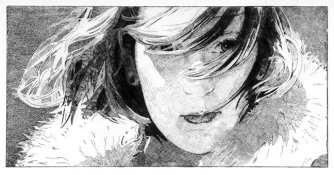Joe VanCleave
Member
Here's a topic I've been meaning to post for some time, and was inspired just this last weekend, after having spent several hours (and a few $), at Weems ArtFest in Abq.
BTW, I post to various photo-related foru, and so decided APUGer's would be the best to discuss this one (I hope.)
I see lots of paintings (western, scenic, etc) in various genres, and many times I can identify the source for the painting was a photograph. Often the clue is composition, but many times it's also the effect of limited DOF; for instance, a full-length portrait of a person, in an outdoor setting, and you can just see that the painter rendered the DOF the same way a lens would: increasingly out of focus the further from the subject. A 'plein air' painter would have chosen to paint the background soft perhaps, to attract the viewer's eye to the foreground subject, but the effect is not the same as copying the way a refractive lens optically renders objects.
So, do you often see paintings that are obviously rendered from a photograph? Can you easily spot the distinction between a painting from a photo and rendering a scene directly from the eye/optic nerve/visual cortex?
BTW, I enjoy viewing well-crafted paintings, and art in general; the more I've studied both photography and painting the more I can tell when one is trying to imitate the other. I think a well-made painting created from the mind of the artist, rather than copied from a photograph, looks very different from a photograph; even if it is a 'realistic' style of painting. Composition is different, as is focus, just for starters.
I'd be interested to hear about your experiences.
~Joe
BTW, I post to various photo-related foru, and so decided APUGer's would be the best to discuss this one (I hope.)
I see lots of paintings (western, scenic, etc) in various genres, and many times I can identify the source for the painting was a photograph. Often the clue is composition, but many times it's also the effect of limited DOF; for instance, a full-length portrait of a person, in an outdoor setting, and you can just see that the painter rendered the DOF the same way a lens would: increasingly out of focus the further from the subject. A 'plein air' painter would have chosen to paint the background soft perhaps, to attract the viewer's eye to the foreground subject, but the effect is not the same as copying the way a refractive lens optically renders objects.
So, do you often see paintings that are obviously rendered from a photograph? Can you easily spot the distinction between a painting from a photo and rendering a scene directly from the eye/optic nerve/visual cortex?
BTW, I enjoy viewing well-crafted paintings, and art in general; the more I've studied both photography and painting the more I can tell when one is trying to imitate the other. I think a well-made painting created from the mind of the artist, rather than copied from a photograph, looks very different from a photograph; even if it is a 'realistic' style of painting. Composition is different, as is focus, just for starters.
I'd be interested to hear about your experiences.
~Joe
Last edited by a moderator:



 Personally, my painting is 99.9% illustration (at least the way I see it) and most of the illustrators I know use a TON of photo reference.
Personally, my painting is 99.9% illustration (at least the way I see it) and most of the illustrators I know use a TON of photo reference. 

